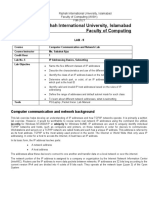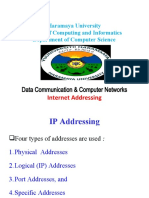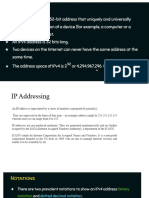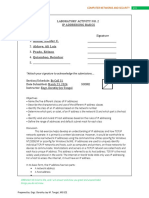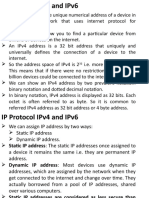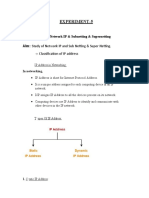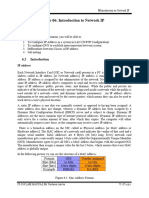0% found this document useful (0 votes)
38 views4 pagesTutorial 6 B
The document provides information about IP addressing including address classes, default subnet masks, network and host addresses, and determining valid host addresses. It includes tables to identify network and host portions of IP addresses for different classes and questions to complete regarding IP addressing fundamentals.
Uploaded by
zainoff445Copyright
© © All Rights Reserved
We take content rights seriously. If you suspect this is your content, claim it here.
Available Formats
Download as DOC, PDF, TXT or read online on Scribd
0% found this document useful (0 votes)
38 views4 pagesTutorial 6 B
The document provides information about IP addressing including address classes, default subnet masks, network and host addresses, and determining valid host addresses. It includes tables to identify network and host portions of IP addresses for different classes and questions to complete regarding IP addressing fundamentals.
Uploaded by
zainoff445Copyright
© © All Rights Reserved
We take content rights seriously. If you suspect this is your content, claim it here.
Available Formats
Download as DOC, PDF, TXT or read online on Scribd
/ 4










